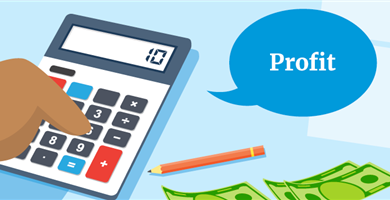What are the best retirement plans?

Why is it important to start saving for retirement early?
Saving for retirement is one of the most ignored topics when it comes to investing. The reason is, young Individuals, value their current financial needs and plans more than their retirement. Because of this, many have to work for additional years in order to fulfill their retirement savings.
Let’s take the example of two individuals, Ram and Shyam to see how saving for retirement early in your life can cause a massive difference.
Ram, who is a 30-year-old employee, starts to invest a minor portion of his salary (Rs 7000) in a retirement fund till the age of 60.
On the other hand, Shyam is a businessman, who starts investing twice the amount than Ram (Rs 14000) per month, at the age of 40 for 20 years, till the age of 60.
The total principal investment of Ram is Rs 25.2 lakh in the tenure of 30 years, whereas Shyam invested a total of Rs 33.60 lakh in 20 years.
At the age of 60, Ram is left with a retirement corpus of Rs 1.05 crores compounded at a nominal rate of 8%. Whereas Shyam receives a total of Rs 83 lakh, with a similar rate of return, despite having invested twice that of Ram.
Therefore, this proves that saving small and investing early for our retirement is exceedingly better than saving more. In the latter part of our life.
Important things to consider while planning for retirement
Here are some points which you should consider when planning to invest for your retirement.
-
Consider inflation
Inflation is one of the key points that you should consider when calculating your overall requirements for your retirement. We cannot accurately predict the cost of goods and services in the future. But assuming an average inflation rate of 6%, we can come up with an approximate range of the cost of our necessities. Inflation not only affects the food prices but also the remaining aspects like housing, health care, education, etc. Therefore adding up the effect of inflation on all your expenses will ensure that you are adequately prepared.
-
Set up an automated investment plan for retirement
You can often forget to save for retirement every month, so to avoid that, you can set up a separate account where a specific part of your income automatically gets transferred on a particular date. By doing this, you eliminate the risk of forgetting and also not spending the money set aside for retirement.
Top Retirement Plans
Saving and setting aside a part of your hard-earned money represents a crucial step when planning for your retirement. However, unless you invest that money in productive assets like stocks, mutual funds, debt instruments, etc, you will not extract the maximum potential of your savings.
The stock markets provide the benefit of compounding wherein your returns generate extra returns. Therefore with this, you are able to beat inflation and get superior returns in the long run.
Now that we are talking about putting your money to work. Let us look at the best investment plans which you can utilize when planning for your retirement.
-
Traditional Tax-saving long term investments
Some of the most secure methods to invest for your retirement is to invest in government schemes like PPF (Public Provident Fund) and NPS (National Pension Scheme). These investments provide multiple benefits such as tax-saving and also tax-free returns. For instance, investing in a PPF account provides a tax rebate on your investments under Section 80C. Also, the gains made in your account are completely exempt from capital gains taxes.
The minimum amount of investment for NPS, as well as PPF, is extremely low at Rs 500-1000 per annum. The PPF account comes with a lock-in of 15 years whereas your money is locked in till the age of 60 in an NPS account. Apart from these, the EPF (Employees Provident Fund) is another option if you are a salaried individual. Here, your employer matches the same amount as you, and the amount gets invested on behalf of you with a return of 8-12%. You can apply to withdraw the amount after reaching the age of 58 from your company.
-
Custom portfolio of stocks
Individuals who possess some knowledge about stock markets can create their own portfolio of stocks for their retirement. Acquiring good quality companies will ensure better returns in the long run provided you have the capacity to bear volatility. Equity as an asset class is highly volatile, therefore, you should be prepared to hold on to your stocks for a minimum of 10 years. And dollar cost average throughout the entire tenure. By performing this you can expect an average return of 12-15%. You can also include some mid and small-cap stocks for added returns but make sure the majority of your capital is invested in blue chip large-cap stocks.
-
Long term Mutual Fund portfolio
For investors who do know have sufficient knowledge about stock markets but still want to get better returns than FDs. Investing in mutual funds is the way for you. Mutual funds are managed by professionals who buy and sell stocks on your behalf. Investing in good quality Mutual funds will make sure you get good returns as stocks. The only downside to this is, you will have to pay a small fee that can range anywhere from 0.1% to 2% as an expense ratio. After retirement, you can use the SWP (Systematic Withdrawal Plan) in mutual fund. To withdraw a certain amount of money periodically to fund your daily needs.
-
Pension schemes
Regular income from your investments is another necessity after retirement, therefore there are multiple schemes that provide a fixed cash flow every month as annuity payments. There are some government schemes like the ‘Atal Pension Yojna’(APY), etc. And also several pension plans from private organizations such as HDFC, LIC, ICICI Bank, etc. These can be a preferred option if you have a lump sum amount to invest for regular returns.
Conclusion
These were some of the options to invest for retirement but remember to choose a plan according to. Your risk appetite and future needs. Furthermore, as your age increases your risk appetite goes down, hence it is important to focus on capital preservation rather than increasing returns.
You should also break up your total investments into different pools for various needs. Your total capital can be allocated according to short (2-3 years), medium (5-7 years), and long term (10 plus years). Wherein the short-term investments can be kept in high-yielding savings accounts or liquid funds. You can use government bonds and debt funds for your medium-term investments. And finally, for long-term mutual funds, large-cap stocks or ETFs can be utilized.




